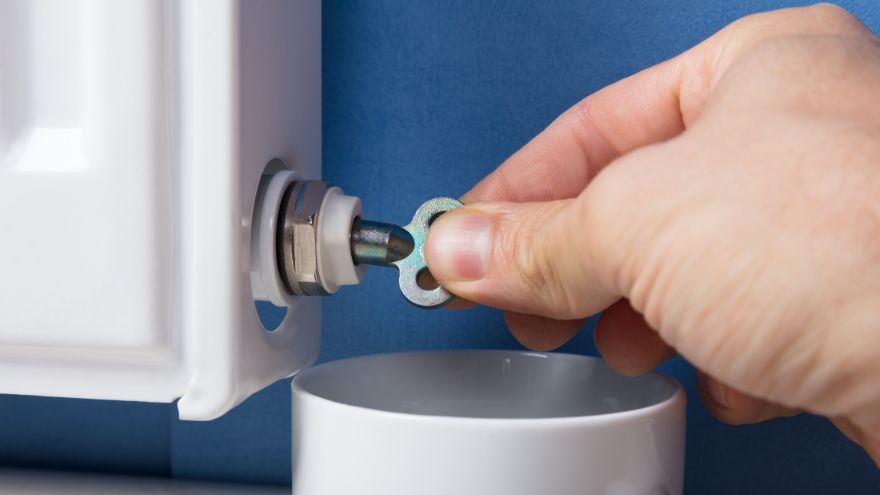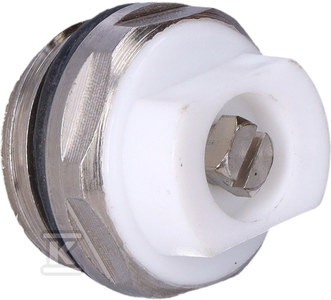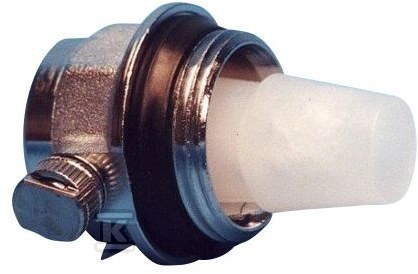One of the causes of a radiator heating incorrectly is a situation in which it is clogged with air. How to recognize that there is air in the radiator and how to bleed it properly?

Check the radiator vents at the Onninen wholesaler
How can you tell if there is air in the radiator?
 An air-filled radiator causes a number of characteristic symptoms, so diagnosing the problem is not difficult. Air in the radiator is most often caused by air particles that enter the heating system and radiators. This situation occurs in the event of a leak in the installation or as a result of irregularities when filling the heating system with water.
An air-filled radiator causes a number of characteristic symptoms, so diagnosing the problem is not difficult. Air in the radiator is most often caused by air particles that enter the heating system and radiators. This situation occurs in the event of a leak in the installation or as a result of irregularities when filling the heating system with water.
What happens when there is air in the radiator? The most characteristic feature is that the radiator heats inefficiently, there are lukewarm or even cold radiators. It often happens that the upper part of the radiator is very hot, while the bottom is cool or cold. The second characteristic feature is the sounds made by an air-filled radiator. When everything works fine, you can hear a gentle noise, but when there is air in the system, the radiators gurgle characteristically.
Proper bleeding of the radiator
If we are sure that there is air in the radiator, we should deal with the problem as soon as possible so that the heating system can continue to operate effectively. To bleed the radiator, you need to know how to go about the task. You need to know that if the radiators are filled with air, it has negative effects not only on the temperature in the room, but also accelerates the corrosion of the radiators, leading to serious heating failures. Modern radiators can be bled quite easily, usually requiring no special skills or tools. You will need a screwdriver or a special key that was provided with the radiator during purchase.
 When starting to bleed the system, it is worth preparing a container in case water leaks from the system. Then turn off the thermostatic valve and place the container directly under the vent knob. The radiator vent screw must be unscrewed slowly, this is very important because too fast a pace could result in water leaking with great force and uncontrolled water leakage. Unscrewing the screw should be stopped at the right moment, many people may be concerned about whether they will recognize when to stop? The most important thing is observation.
When starting to bleed the system, it is worth preparing a container in case water leaks from the system. Then turn off the thermostatic valve and place the container directly under the vent knob. The radiator vent screw must be unscrewed slowly, this is very important because too fast a pace could result in water leaking with great force and uncontrolled water leakage. Unscrewing the screw should be stopped at the right moment, many people may be concerned about whether they will recognize when to stop? The most important thing is observation.
At the beginning of operation, mainly air and a small amount of water come out of the radiator. The signal that all the air has escaped from the radiator is the stabilization of the water flow. In such a situation, tighten the manual air vent valve. It is worth emphasizing that modern radiators made of aluminum or steel are much easier to bleed than a cast iron radiator, where it was necessary to have basic tools to loosen the screw connection and precision of operation so as not to damage individual elements.
Why doesn't the radiator heat up despite bleeding?
Bleeding the radiators should bring about the expected change and even heat should return to the radiator, and with it the heating should provide adequate heat throughout the house. However, it happens that despite the actions taken during bleeding, the radiator still heats unevenly or does not heat at all, which means that the problem was not only caused by the radiator filled with air. One of the reasons for this situation is too little water in the system, then it is usually enough to add water. However, it must be determined whether the problem was caused by another failure, e.g. liquid leakage from the heating system.
 Leaks and leaks after repair require re-bleeding of the system. These faults not only cause water to leak, but are also responsible for air entering the system. Another cause of the problem may be a fault in the thermostat on the radiator, which is located directly on the cable that leads from the boiler to the radiator. The radiator can be bled, the boiler works properly, and the thermostat is responsible for blocking the water flow and heating the radiator.
Leaks and leaks after repair require re-bleeding of the system. These faults not only cause water to leak, but are also responsible for air entering the system. Another cause of the problem may be a fault in the thermostat on the radiator, which is located directly on the cable that leads from the boiler to the radiator. The radiator can be bled, the boiler works properly, and the thermostat is responsible for blocking the water flow and heating the radiator.
This situation happens, for example, when the radiator has not been used for a long time, then the knob may get stuck and not work properly. Contrary to appearances, most often the fault can be repaired quite easily. A big problem is a situation in which the problem is caused by incorrect initial settings in the hot water supply, so the thermostatic head located on the radiator should be adjusted and observed. If there is no improvement, it is better to ask a professional for help.
Air vents at the Onninen wholesaler
The Onninen installation wholesaler 's offer includes various variants of professional products, such as a manual and automatic vent valve, dedicated to various radiator variants.
- One example is the Onnline manual air vent , made of aluminum, with external thread. The valve model has appropriate certificates and approvals, so you can be sure that it will effectively protect the heating medium, which is a radiator. Various valve variants are available for sale, used in ½", 1", ⅜" and other connections. If you need non-standard valves, check our offer.
- An alternative solution is an automatic air vent for an aluminum radiator . When choosing this model, you should pay attention to the type of thread, as solutions with left and right thread are available on the market. This model does not have a shut-off valve.
- Another example are automatic vertical air vents from PrimoVent , used at the highest point of a given installation. Its advantage is the ability to remove air from the system during installation operation. It also prevents water from dripping. Made of brass, making it a durable and durable model.